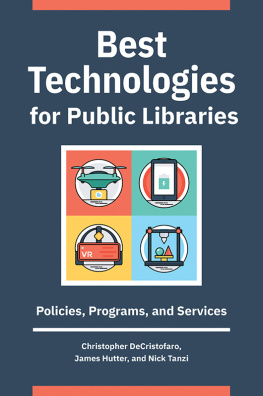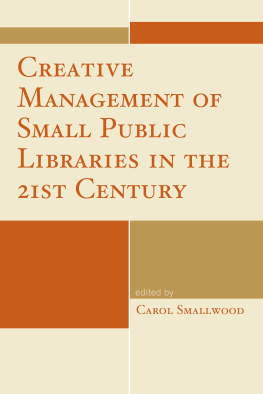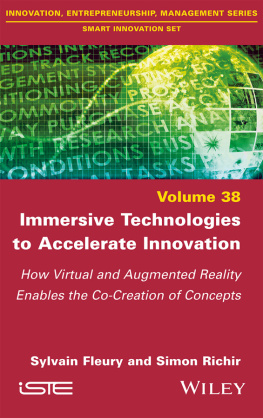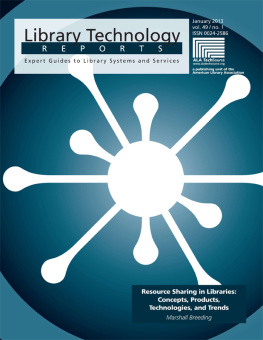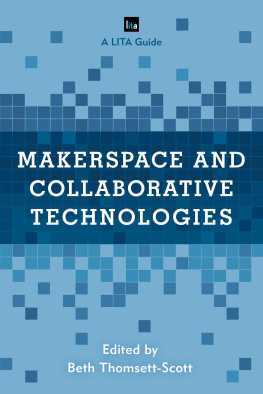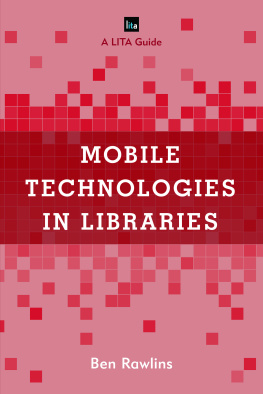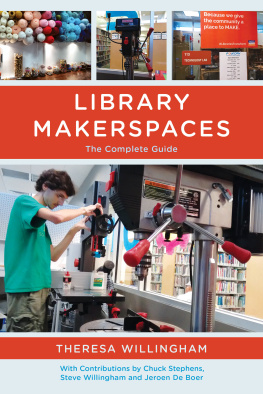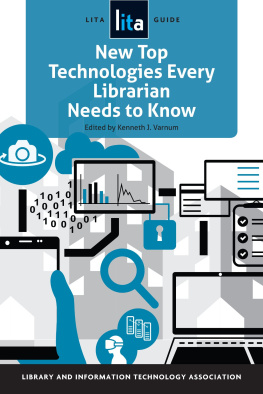Best Technologies for
Public Libraries
Best Technologies for
Public Libraries
Policies, Programs,
and Services
Christopher DeCristofaro, James Hutter,
and Nick Tanzi

Copyright 2020 by Christopher DeCristofaro, James Hutter, and Nick Tanzi
All rights reserved. No part of this publication may be reproduced, stored in a retrieval system, or transmitted, in any form or by any means, electronic, mechanical, photocopying, recording, or otherwise, except for the inclusion of brief quotations in a review, without prior permission in writing from the publisher.
Library of Congress Cataloging-in-Publication Data
Names: DeCristofaro, Christopher, author. | Hutter, James, author. | Tanzi, Nicholas, author.
Title: Best technologies for public libraries : policies, programs, and services / Christopher DeCristofaro, James Hutter, and Nick Tanzi.
Description: Santa Barbara, California : Libraries Unlimited, 2020. | Includes bibliographical references and index.
Identifiers: LCCN 2019039224 (print) | LCCN 2019039225 (ebook) | ISBN 9781440869280 (paperback ; acid-free paper) | ISBN 9781440869273 (ebook)
Subjects: LCSH: Public librariesTechnological innovations. | Public librariesInformation technology. | Three-dimensional printing services in libraries. | Drone aircraft. | Virtual realityLibrary applications. | Public librariesUnited StatesCase studies.
Classification: LCC Z678.9 .D39 2020 (print) | LCC Z678.9 (ebook) | DDC 027.4dc23
LC record available at https://lccn.loc.gov/2019039224
LC ebook record available at https://lccn.loc.gov/2019039225
ISBN: 978-1-4408-6928-0 (paperback)
978-1-4408-6927-3 (ebook)
24 23 22 21 20 1 2 3 4 5
This book is also available as an eBook.
Libraries Unlimited
An Imprint of ABC-CLIO, LLC
ABC-CLIO, LLC
147 Castilian Drive
Santa Barbara, California 93117
www.abc-clio.com
This book is printed on acid-free paper 
Manufactured in the United States of America
Contents
Together, the authors would like to thank the following individuals, whose assistance made this book possible:
Michael Bartolomeo
Melanie Davidoff
Brandon Faucett
Scott Kalogris
Jane Kauzlaric
Keith Klang
Chad Mairn
Alison Mirabella
Dean Meyer
P. J. Novak
Katy OGrady
Nicole Parisi
Steve Patti
Nils Reardon
Georgina Rivas-Martinez
Janet Scherer
Ian Sloat
Noah Thielke
Andrew Tricket
Sally Turbitt
Angela Zimmermann
Christopher DeCristofaro
I would like to thank the following people:
My wife, Kim, and my daughters, Julia and Courtney, for their gracious understanding and support while I worked on this endeavor.
Anthony Bliss and Alexander Boris, my colleagues and partners in crime, who have been great sources of knowledge, wisdom, and guidance.
Colleagues both near and far, who would lend an ear and donate an idea that, many times, would become inspiration for content in this book.
Neely McCahey, for always listening, understanding, and inspiring.
James Hutter
I wish to thank the following people:
Jamie, for providing the patience and understanding during this project that only a fellow author could. I get to now return the favor as you complete your novel!
Mina, for doing her best to provide Jamie and me with at least five hours of sleep each night and for sharing valuable insights into cutting-edge technologies that only a four-month-old baby could.
My Port Washington Public Library family, for being courageous enough to experiment with many of these technologies and for supporting my efforts to share our knowledge and experiences with the world.
... and I thank the reader. Remember to experiment! Fail! Then, succeed and teach the rest of us!
Nick Tanzi
I would like to thank the following people:
My wife, Kristine, for enduring many extra hours of Play-Doh hamburgers, Dora the Explorer marathons, and Laurie Berkner dance parties with our daughter so I could get away to write. The next year of letting out our dog, Bear, at 4:00 a.m. are on me.
Sara Roye, for pretending to be surprised when I told her I needed some help creating graphics for a book, and for not surprising me when she selflessly agreed to do it.
My friends, for feigning interest in a conversation on emerging technologies in libraries while were at a restaurant on a Saturday night.
My colleagues, for their encouragement, support, and dedication to serving the public. Its dangerously liberating when you have a team behind you that will always figure things out.
My editor, Jessica Gribble, for her attention to detail, calming influence, and scary-fast responses to emails.
Emerging technology is a term that can inspire excitement or dread in equal measure among library staff. While new technologies offer tremendous opportunities for the development of programs and services, they also present multiple challenges to your organization. This book examines four technologies3D printing, drones, virtual reality, and augmented realityand their place in the public library. In doing so, it addresses several critical issues.
STAFF TRAINING
When introducing a new technology to the library, it is only natural that a large percentage of your staff will be unfamiliar with it. Unless this unfamiliarity is addressed, it can quickly lead to staff anxiety. Training is, of course, essential. Any training you offer, however, should never be one-size-fits-all! Rather, it should be developed around specific staff roles. Consider the use of computers within your organization. You dont simply require that every library employee be a computer expert capable of troubleshooting and repair!
Using the example of computers, a more reasonable approach to training is to ensure that all staff members are aware that the library has computers available for public use. You require that a sizeable portion of library staff understand the basics of using a computer. Continuing on, a somewhat smaller percentage of staff will have been shown how to utilize specific software. Finally, the smallest group of users are trained in the troubleshooting and repair of your hardware, software, and overall computer network.
In a similar fashion, this book addresses training by first creating roles within an overall workflow and then determining what skills are necessary in each. This approach will allow your organization to engage in targeted staff development that matches how individual employees will interact with each technology. By creating role-specific training, your organization will save both time and money.
IMPLEMENTATION
After coming to know and understand a new technology, a library must next move toward implementation. The many possibilities offered by each is overwhelming and can paralyze an organization with indecision. This book seeks to address this issue using a multi-pronged approach, including the elements listed below.
Equipment Selection
Within each technology, options abound! Well discuss whats out there in the marketplace and just what its capable of. Far from just rating individual pieces of equipment, we will provide you with the tools needed to perform your own evaluations. Although there is no true way to future-proof a book on technology, this approach will serve you well into the future. Ultimately, the goal is to identify not just the best equipment but also the best fit for your unique organization.

